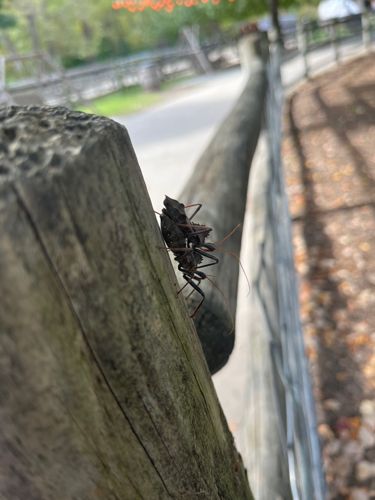Wheel Bug
Scientific Name: Arilus cristatus
Order & Family: Hemiptera (True Bugs), Reduviidae (Assassin Bugs)
Size: Typically 2.5 to 3.8 cm (1 to 1.5 inches) in length, making them one of the larger assassin bugs in North America.

Natural Habitat
Found in various habitats with vegetation, including gardens, agricultural fields, woodlands, and urban areas, often on plants and trees.
Diet & Feeding
Strictly predatory, feeding on a wide variety of other insects, including caterpillars, beetles, true bugs, and even larger prey like grasshoppers and wasps. They use their strong, beak-like mouthpart (rostrum) to inject venom and digestive enzymes into their prey.
Behavior Patterns
Nocturnal hunters, though they can be active during the day. They are ambush predators, often waiting motionless on plants for prey to come within striking distance. They are known for their slow, deliberate movements. When threatened, they can emit a foul-smelling fluid and deliver a painful bite.
Risks & Benefits
Potential Risks: Their bite can be very painful, similar to a bee or wasp sting, and can cause localized swelling and numbness for several days. However, it is not medically significant and they are not aggressive unless provoked. Potential Benefits: They are highly beneficial insects for pest control in gardens and agriculture, preying on many common plant-damaging insects, thus reducing the need for chemical pesticides.
Identified on: 10/11/2025